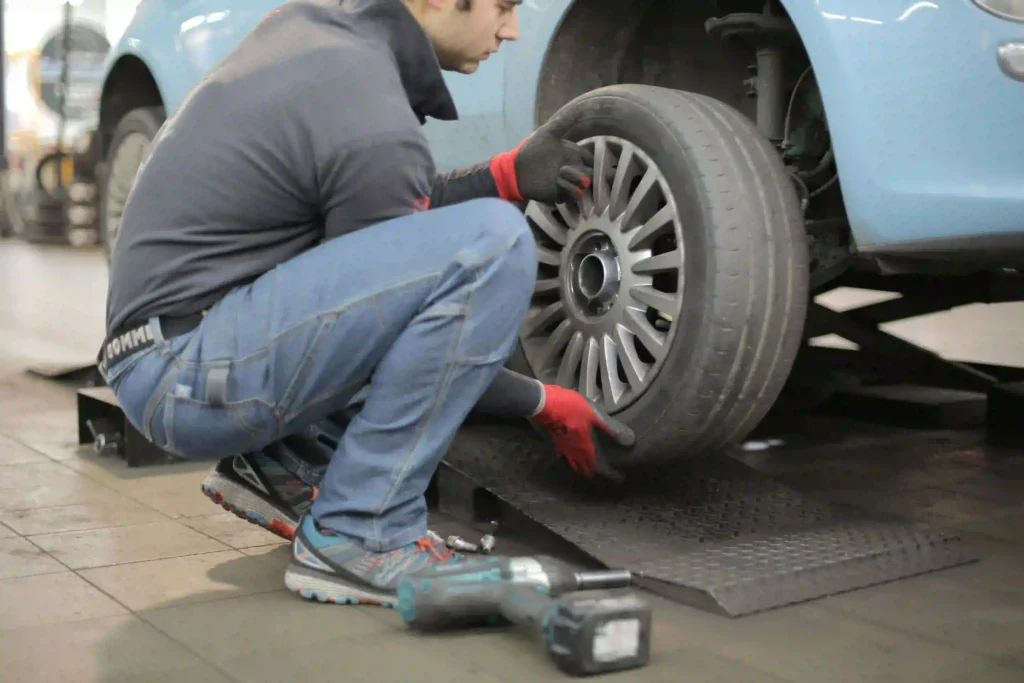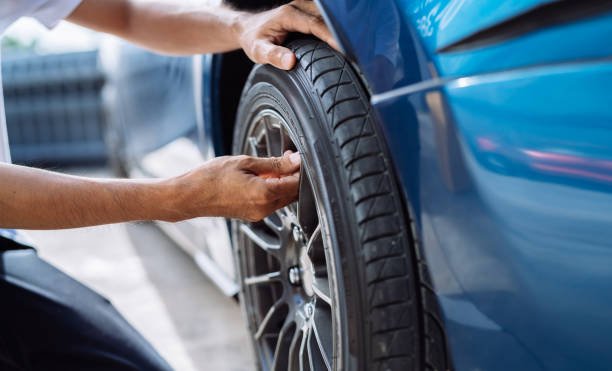Regular tire rotation is one of the most overlooked aspects of proper vehicle maintenance. While everyone knows they should check their tire air pressure and tread depth periodically, many drivers don’t realize the importance of rotating their tires. Failing to rotate tires on the recommended schedule can lead to a variety of problems down the road.

What Happens If You Don’t Rotate Your Tires?
Uneven Tread Wear
The main reason to rotate tires is to promote more uniform wear across all four tires on a vehicle. If you don’t rotate your tires, the front ones end up bearing more weight and doing more work than the rear ones while cornering and braking. This causes them to wear out faster. Similarly, in a rear wheel drive vehicle, the rear tires take on more load and wear out quicker if rotation is neglected.
Without periodic rotation, you end up with two tires that are badly worn and two that still have decent tread depth. This is an unsafe situation, as traction, braking performance, and handling capability are dictated by the two worst tires, not the best ones. Uneven wear also makes the vehicle prone to pulling to one side.
Premature Replacement
By allowing uneven tread wear to develop, you’ll significantly reduce the total mileage you can expect from your tires before replacement is necessary. Two will be ready for the scrap heap well before the other two due to neglecting rotation.
This means you have to buy an entire set prematurely, instead of getting thousands more miles out of the lightly-worn ones. Paying for early replacement tires because rotation was neglected is simply pouring money down the drain.
Safety Risks
Uneven tread wear impacts wet weather performance dramatically. The bald tires lose the ability to channel water effectively and generate much less grip. This makes the vehicle more prone to hydroplaning where a thin film of water separates the tires from the road leading to a complete loss of control.
Handling predictability also suffers as the tires provide uneven and unbalanced traction around corners. Braking distances are extended with compromised tires too, which jeopardizes safety. Simply put, uneven wear puts you at much higher risk of crashes, particularly in less than ideal conditions.
Alignment Issues
Many times, failing to rotate tires will hide emerging alignment problems. For example, an alignment issue that causes accelerated inner tread wear on the front tires will get reversed when tire rotation happens.
Then that issue becomes visible on the inside of the rear tires. Without rotating, you may not realize there is a mounting alignment problem that requires adjustment to prevent uneven wear. Catching alignment problems early saves money and unnecessary tire wear over the long haul.
Reduced Fuel Economy
Safety risks aren’t the only downside of uneven tire wear. Fuel efficiency takes a hit too. As tread depth decreases due to wear, tires generate more rolling resistance which makes the engine work harder.
By allowing just two tires to wear prematurely from lack of rotation, you condemn your vehicle to increased fuel consumption until finally replacing those tires. Keeping tread depth even across all four corners through timely rotation optimization maximizes fuel economy.
What is Tire Rotation?
Tire rotation refers to periodically switching the position of tires on a vehicle to promote more uniform wear. The front and rear tires endure different loads and forces, resulting in uneven tread wear if left in the same position all the time. By rotating tires, all four tires wear more evenly and last longer before needing replacement.
On a basic level, tire rotation involves moving the front tires to the rear and the rears to the front. Some vehicles also call for a criss-cross pattern, where the front left goes to the rear right and vice versa. Some trucks and SUVs with different sized wheels front vs rear require a side-to-side rotation pattern instead.
The goal is to allow each tire to spend time at different positions around the vehicle to reduce uneven tread wear resulting from stationary positioning. Like rotating crops in an agricultural field, you want to mix up the most worn areas for longevity.
How Often Should Tire Rotation Happen?
Most owner’s manuals suggest rotating every 5,000 to 8,000 miles. That’s a good general guideline to prevent the issues outlined above. However, optimal rotation intervals really depend on your individual driving habits and vehicle configuration. Here are some factors to consider:
Front vs rear wheel drive: Rear drive vehicles like pickup trucks put more stress on the rear tires and require more frequent rotation.
Performance vs economy focus: Performance-oriented driving risks uneven wear arising quicker in high-load corners.
Tire type variations: Trucks with different tire sizes front vs rear complicate rotations.
Alignment issues: If you already have alignment problems, rotate more often.
Driving style: Aggressive acceleration and braking amplifies wear rate differences.
Consult your owner’s manual or local tire shop about an interval customized to your vehicle and driving tendencies. Some high-performance cars need rotations as often as 3,000 miles for example.
It’s also smart to do an initial rotation early in your ownership, at say 2,000 miles. That identifies any obvious wear issues needing alignment attention before they escalate. Remember that inspection during oil changes can also catch emerging rotation needs.
How Long Do Tires Last If You Don’t Rotate Them?
Failing to rotate tires significantly reduces their lifespan. The tread wears unevenly since the front tires bear more braking, turning, and weight-bearing demands. Similarly for rear-wheel drive vehicles, the rear tires wear faster doing more driving and acceleration work.
Without rotating, the more heavily loaded tires will require replacement prematurely. For example, the fronts may be nearly bald at 20,000 miles while the rears still have 50% tread remaining. This necessitates buying an entire new set instead of getting 30,000+ miles out of the lightly worn rear pair with proper rotation.
In extreme cases of a vehicle never having its tires rotated, total mileage before replacement could be 1/3 less than expected. So 30,000 mile tires may only last 20,000 miles, 40,000 mile tires die at 26,000 miles, etc. That’s expensive – buying new tires years sooner than should be necessary.
Reduced wet weather handling and traction also result. The two worn “drive tires” lose water dispersal channels in the tread necessary for staying firmly planted on wet pavement. And uneven wear hurts handling predictability as traction varies drastically across the tread ends of different tires while cornering.
Not only does rotation extend individual tire life, it optimizes the safe working lifespan of the set to maximize value. It’s cheap “preventative maintenance insurance” against early replacement costs. Modern TPMS (tire pressure monitoring) systems make rotating tires yourself fairly straightforward too.
Can Rotating Tires Mess Up Alignment?
No, properly rotating tires does not mess up wheel alignment. However, the act of rotation can reveal underlying alignment issues that were hidden before. Here’s a more detailed explanation:
The goal of rotation is to promote uniform tire tread wear by changing position on the vehicle. It does not alter the geometric relationship between the wheels and suspension that dictates alignment. All the rotational forces and loads remain where they were before, just distributed across different tires after rotation.
The Bottom Line
Neglecting tire rotation leads to safety risks, premature replacement costs, reduced fuel economy, and unnecessary repairs from hidden alignment issues. But understanding what irregular wear looks like and catching problems early pays dividends.
So make rotation a habitual part of your vehicle’s maintenance cycle. Your tires will last longer, your car will drive better, and your bank account will thank you. Thinking short-term convenience outweighs long-term costs is penny wise but pound foolish when it comes to skimping on tire rotation.


